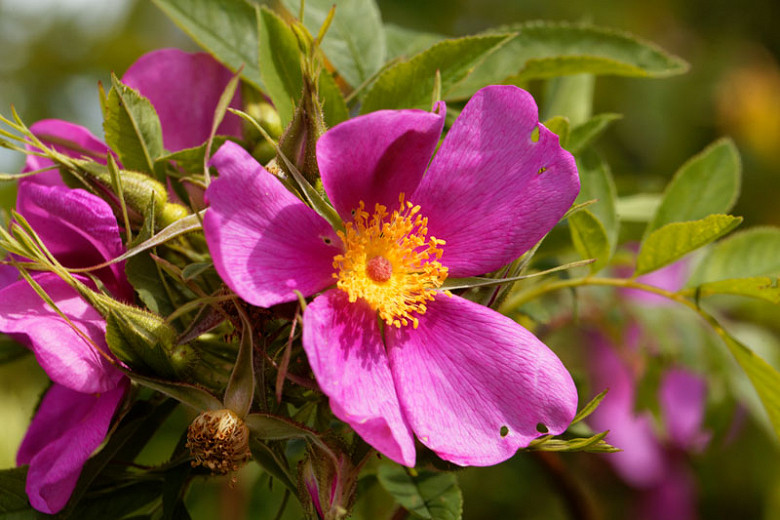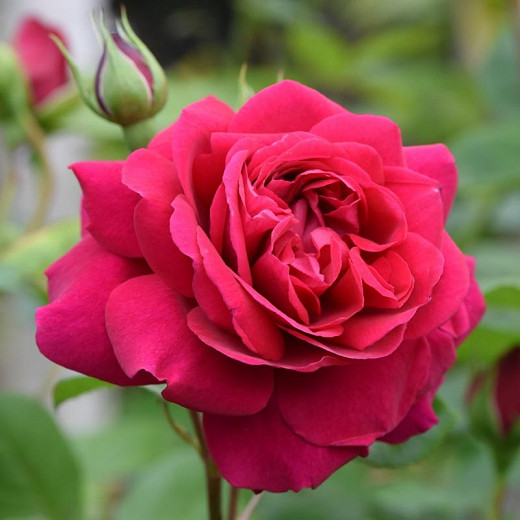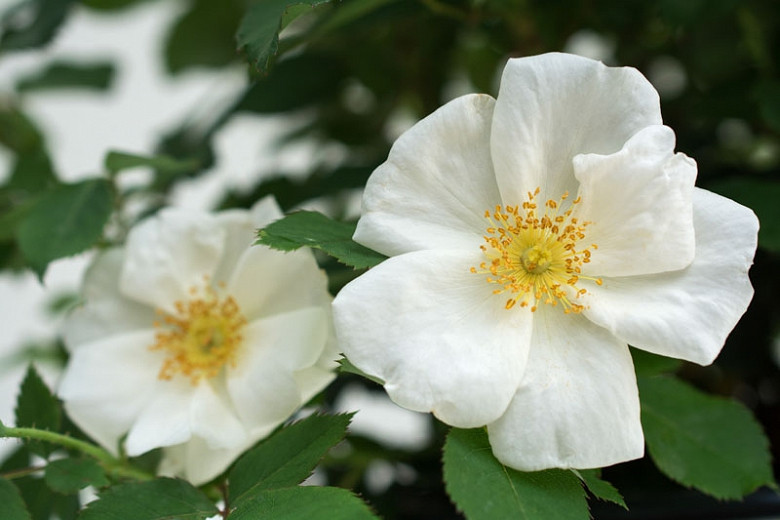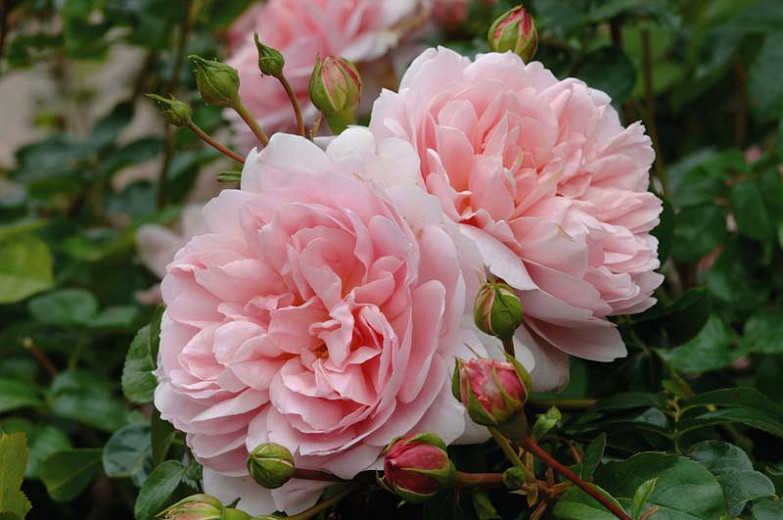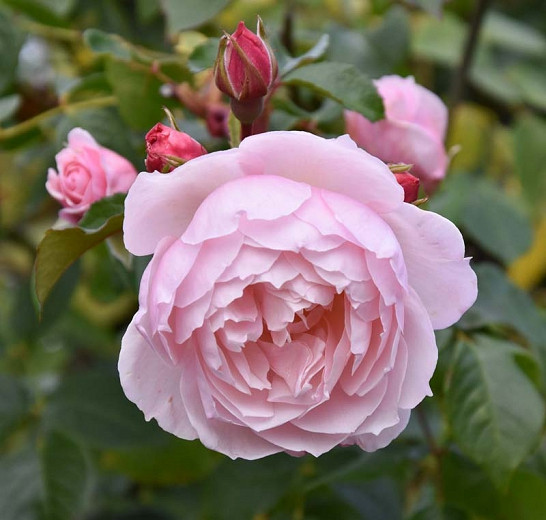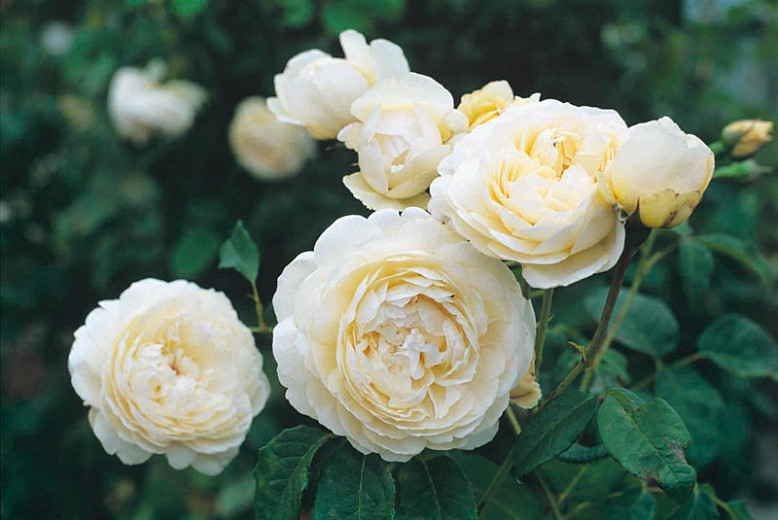Rosa carolina (Carolina Rose)
Rosa carolina (Carolina Rose) is a deciduous, suckering shrub with attractive, smooth, dark-green, compound leaves that turn deep red in the fall. In late spring to early summer, a profusion of fragrant, 5-petaled, pink flowers, 2 in. across (5 cm), are on display. Borne singly or in small clusters, they are rich in nectar, attracting bees and butterflies. They are followed by abundant, red rose hips in late summer, which persist on the plant all winter, providing food for wildlife. High in vitamin C, they can be used for making tea or jelly. Carolina Rose is usually an erect shrub, but taller plants tend to sprawl. It features narrow straight spines that are sparsely distributed along its woody stems. Carolina Rose is more resistant to foliar disease than most horticultural roses and tolerates hot dry weather. It is a lovely addition to a wildlife garden.
- Grows up to 3-6 ft. tall (90-180 cm) and 5-10 ft. wide (150-300 cm). This plant will spread by suckers to form small colonies.
- Best grown in full sun in dry to wet-mesic, well-drained soils. Tolerates part shade, but the best flowering occurs in full sun. Provide good air circulation to prevent foliar diseases and summer mulch to retain moisture and keep roots cool. This plant has considerable resistance to drought.
- Perfect for cottage gardens, wildflower meadows, and native plant gardens.
- This rose species rose has a better natural resistance to rose diseases than most hybrid roses. Keep an eye out for aphids, beetles, borers, scale, thrips, rose midges, leafhoppers, and spider mites.
- Once established, the plants require no special care and spread slowly.
- Prune in late winter to early spring.
- Propagated by seed, cuttings or stolon division.
- Native to the eastern and central United States, from Maine to Minnesota and in the south from Florida to Texas.
Requirements
| Hardiness | 4 – 9 |
|---|---|
| Plant Type | Roses, Shrubs |
| Plant Family | Rosa – Shrub Roses, Rosa – Roses |
| Exposure | Full Sun |
| Season of Interest | Spring (Late)Summer (Early)Fall |
| Height | 3' – 6' (90cm – 180cm) |
| Spread | 5' – 10' (150cm – 3m) |
| Spacing | 60″ – 120″ (150cm – 300cm) |
| Water Needs | Low, Average |
| Maintenance | Average |
| Soil Type | Clay, Loam, Sand |
| Soil pH | Acid, Neutral |
| Soil Drainage | Moist but Well-Drained, Well-Drained |
| Characteristics | Fragrant, Showy, Fruit & Berries |
| Native Plants | United States, Midwest, Illinois, Indiana, Iowa, Kansas, Michigan, Minnesota, Missouri, Nebraska, Ohio, Wisconsin, Northeast, Connecticut, Delaware, Maine, Massachusetts, Maryland, New Hampshire, New Jersey, New York, Pennsylvania, Rhode Island, Vermont, Alabama, Arkansas, Florida, Georgia, Kentucky, Louisiana, Mississippi, North Carolina, South Carolina, Tennessee, Virginia, West Virginia, Southwest, Oklahoma, Texas |
| Tolerance | Drought, Dry Soil |
| Attracts | Bees, Birds, Butterflies |
| Garden Uses | Beds and Borders, Hedges and Screens |
| Garden Styles | Informal and Cottage, Prairie and Meadow |
